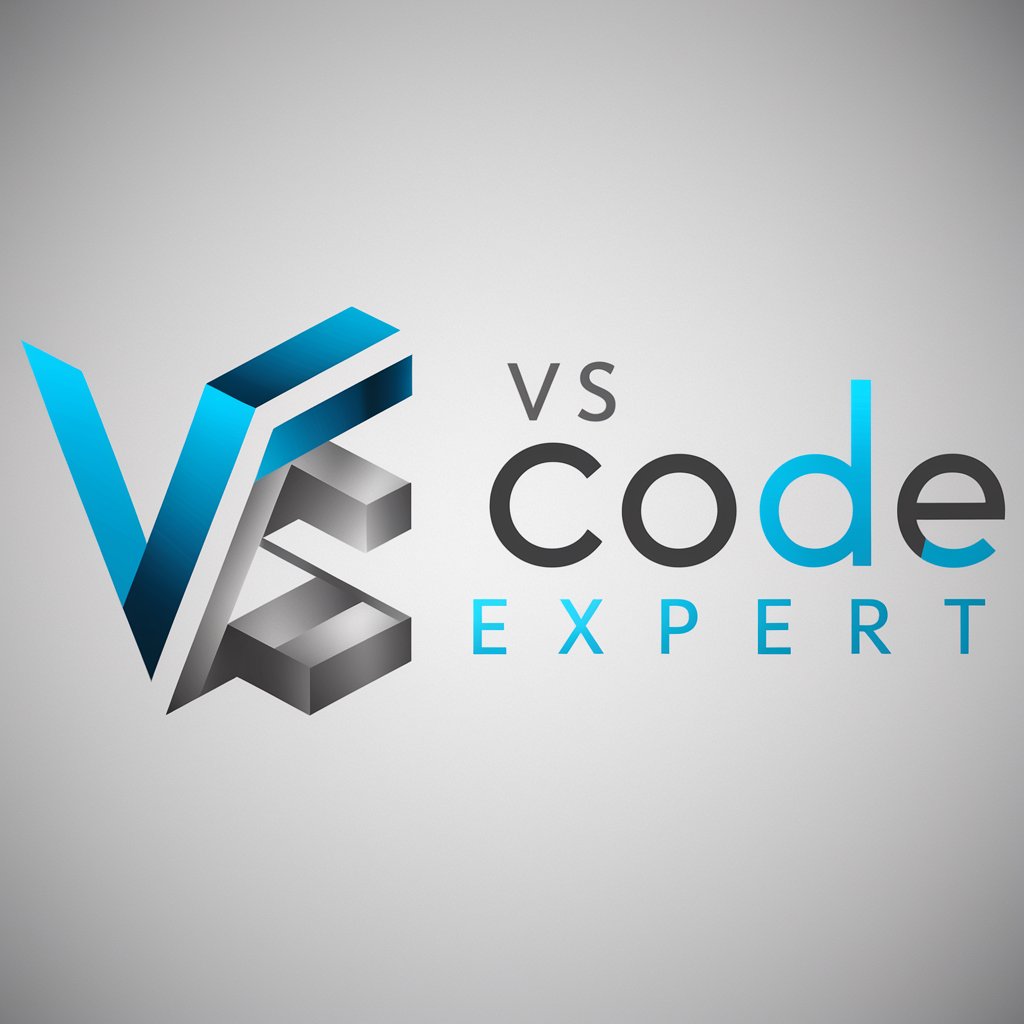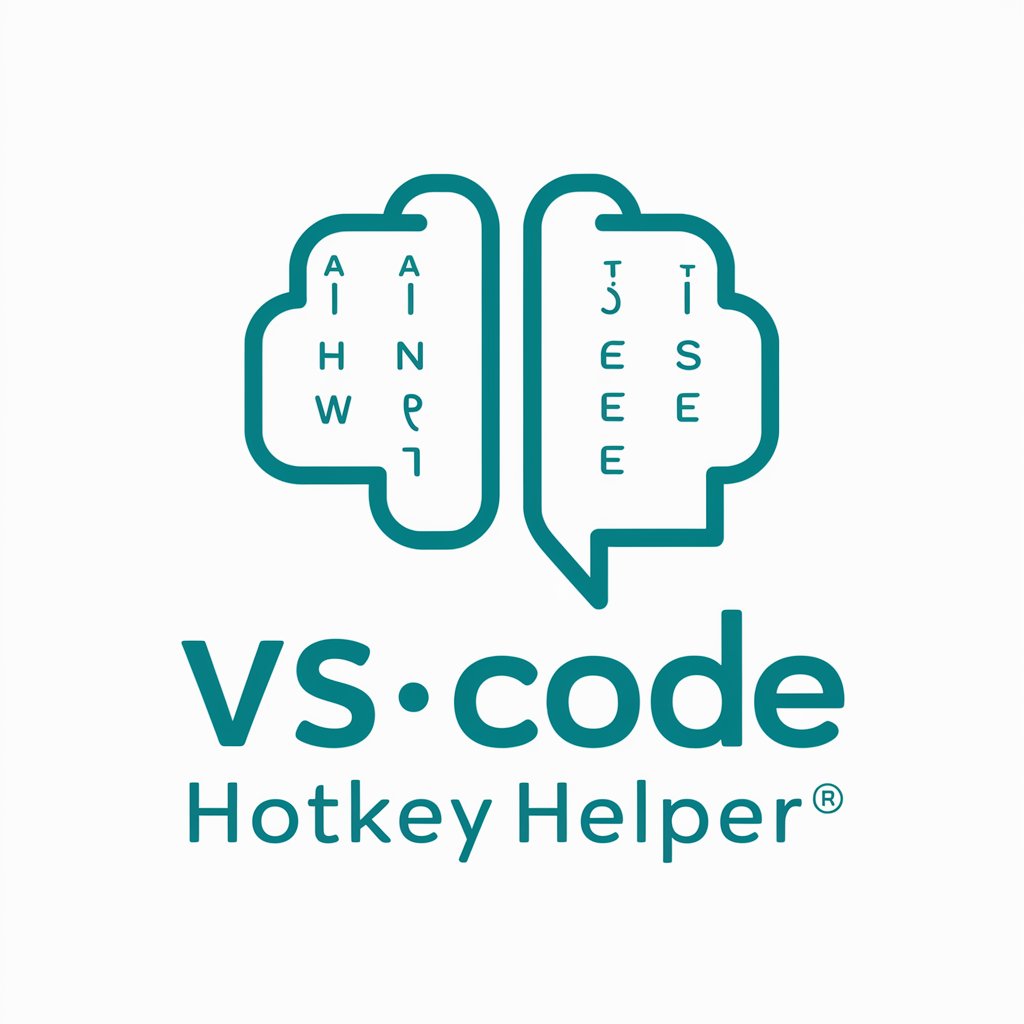VS Code - Powerful Code Editor

Hello! How can I assist you with VS Code today?
AI-enhanced coding experience.
How can I set up an integrated development environment in VS Code?
What are the best extensions for debugging in VS Code?
Can you guide me through the process of refactoring code in VS Code?
What are the latest updates in Visual Studio Code and how can they improve my workflow?
Get Embed Code
Overview of Visual Studio Code
Visual Studio Code (VS Code) is a free, open-source code editor developed by Microsoft. It's designed to be a versatile and powerful tool that supports a wide range of programming languages and development tasks. VS Code provides an efficient coding environment with features such as syntax highlighting, intelligent code completion (IntelliSense), code refactoring, and debugging support. Its lightweight design, combined with powerful developer tools, makes it ideal for everything from quick script edits to major development projects. A key aspect of VS Code's design is its extensibility, allowing users to customize their experience with extensions for additional languages, debuggers, and tools to fit their workflow. For example, a web developer can use extensions for HTML, CSS, and JavaScript, along with a live server extension to preview changes in real-time, illustrating the editor's flexibility and adaptability to various development scenarios. Powered by ChatGPT-4o。

Core Functions of Visual Studio Code
IntelliSense
Example
While writing Python code, IntelliSense suggests completions for variables, methods, and imported modules, speeding up the coding process and reducing errors.
Scenario
A developer is working on a Python project, and as they type `import numpy as np` and then `np.`, IntelliSense provides a list of functions and properties available from the numpy module, allowing for quick selection without needing to refer to external documentation.
Debugging
Example
Setting breakpoints in a Node.js application to inspect variables and step through code execution line by line.
Scenario
In a Node.js application, a developer suspects a bug in a function. They use VS Code to set breakpoints and start a debugging session, which pauses execution at these points. The developer inspects variable values and steps through the code execution to identify and fix the issue.
Extension Marketplace
Example
Installing the Python extension to get specialized support for Python coding, including linting, debugging, and test running.
Scenario
A developer starting a new Python project realizes they need better support for Python-specific tasks. They browse the VS Code Extension Marketplace, find the Python extension by Microsoft, and install it, significantly enhancing their development environment with features tailored for Python development.
Source Control Integration
Example
Using the integrated Git support to commit changes, push to a repository, and merge branches within the editor.
Scenario
A software team collaborates on a project hosted on GitHub. Team members use VS Code's built-in Git functionality to manage their work: staging changes, committing them, and pushing to the remote repository, all within the editor. This streamlines their workflow and keeps the focus on coding.
Customizable Workspace
Example
Adjusting settings and installing extensions to tailor the development environment to specific project needs.
Scenario
A developer working on both a web development project and a machine learning project uses VS Code's customizable workspaces to switch between different sets of extensions and settings optimized for each project type, ensuring an efficient and tailored development experience.
Who Benefits from Using Visual Studio Code?
Software Developers
Professionals and hobbyists developing software across various languages and frameworks. They benefit from VS Code's extensive language support, debugging tools, and customizable environment, which streamline the development process from writing code to deployment.
Web Developers
Individuals focusing on frontend and backend web development. VS Code offers live preview extensions, CSS/HTML/JavaScript IntelliSense, and integrated version control, making it a powerful tool for building and maintaining websites and web applications.
Data Scientists and Analysts
Users working with data analysis, machine learning, and scientific computing can leverage VS Code's support for Jupyter notebooks and Python, along with extensions for data visualization and remote development capabilities, to efficiently process, analyze, and visualize data.
Students and Educators
Learners and teachers in computer science and related fields find VS Code accessible and powerful for writing code, completing assignments, and teaching programming concepts. Its free cost and wide range of extensions make it an ideal tool for education.
DevOps Professionals
Individuals focused on continuous integration/continuous deployment (CI/CD), infrastructure as code (IaC), and automation. VS Code supports various programming and scripting languages, Docker, and Kubernetes extensions, facilitating DevOps practices and workflows.

How to Use VS Code
Start with a Free Trial
Begin by visiting yeschat.ai to start using VS Code with a free trial, no login or ChatGPT Plus subscription required.
Download and Install
Download VS Code from the official Visual Studio Code website and install it on your system. Ensure your system meets the minimal requirements for smooth operation.
Explore the Interface
Familiarize yourself with the VS Code interface. Learn about the Explorer, Source Control, Debugging, Extensions, and Terminal panels to manage your workspace efficiently.
Install Extensions
Enhance your VS Code functionality by installing extensions. Go to the Extensions view by clicking on the square icon on the sidebar or pressing Ctrl+Shift+X and search for the extensions relevant to your development needs.
Customize and Code
Customize your settings by accessing the settings.json file for a personalized coding experience. Start coding by opening or creating a new file and using the rich set of features like IntelliSense, debugging, and version control integration.
Try other advanced and practical GPTs
Turing Test - Human VS AI
Blurring the lines between human and AI conversations.

Parents vs Guardians
Empowering guardianship decisions with AI-powered legal insights.

VS Code Hotkey Helper
Streamline your coding with AI-powered shortcuts.

Cats vs Dogs
Proving cats' superiority with wit and humor.

$ vs 원
Your AI-powered guide to USD/KRW trends

クレーマークレーマー:Kramer vs. Kramer
Empowering Your Voice with AI

Word Today
Elevate Your Writing with AI

Vocabulary Today
Expand your vocabulary with AI-powered insights.

Detox Today
Empowering your detox journey with AI.

News Today
Stay informed effortlessly with AI-driven news summaries.

BibleBytes Today
Bringing Scripture to Life with AI

News today
Stay Updated with AI-Driven News

Detailed Q&A About VS Code
How do I efficiently navigate through code in VS Code?
Use the 'Go to Definition' and 'Peek Definition' features to navigate your codebase quickly. You can also use the breadcrumb navigation at the top of the editor and the 'Go to File' feature (Ctrl+P) to jump to files, symbols, or lines.
Can VS Code be used for team collaboration?
Yes, VS Code supports team collaboration through extensions like Live Share, which allows you to share your coding session and collaborate on code in real-time with team members.
How do I debug code in VS Code?
Utilize the built-in debugger by clicking on the Debug view icon on the sidebar, selecting your debug environment, and starting a debug session. Set breakpoints, watch variables, and step through your code to troubleshoot issues.
Is it possible to customize the look and feel of VS Code?
Absolutely. VS Code allows you to customize themes, icon themes, and file icons. You can also adjust settings like font size, color, and editor layout to suit your preferences.
What is the best way to manage version control in VS Code?
VS Code has integrated support for Git, allowing you to commit, pull, and push changes directly from the editor. The Source Control panel provides a unified view of your project's version control status.
